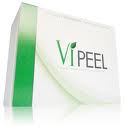The use of lasers and light therapies has dominated the talk about skin retexturing and resurfacing over the past decade. While they do produce some wonderful results, their use has overshadowed the historical approach of chemical peeling of the face. Chemical peeling today has been largely relegated to the superficial peels done by aestheticians and not physicians. When combined with microdermabrasion, they are known to produce a nice refreshening effect but the results are not comparable with laser treatments.
Most chemical peels that produced any significant results, such as trichloroacetic acid (TCA) and phenol, have involved significant recovery and discomfort. Medium to deep-depth peels done by physicians required significant skin penetration to produce their results. This produces significant upper layer skin sloughing and downtime. Personally, I had assumed that ‘state-of-the-art’ chemical peeling was more about technique than the chemical compositions of the solutions.

My Indianapolis plastic surgery experience with the Vi Peel has shown that it is a real revolutionary peel. I say this for the following four reasons. First and initially important is that the peel produces a significant anesthetic effect on the skin on application. So one can have the peel without pain. That is really important to patients and encourages them to return for further treatments. I assume that the anesthetic effect is from the phenol component of the solution. Secondly, it does produce real skin improvement that appears to be equivalent to that obtained from micropeel laser treatments. (less than 50 microns) A series of Vi Peels can be a comparatively cost-effective skin rejuvenation program. Third, it can be safely used on all skin types (even a Fitzpatrick V or VI) as well as on the more sensitive areas of the neck and the chest. (historical ‘no-peel’ zones) Eliminating sunspots from the hands and chest and decreasing wrinkles in the décolletage areas has always been problematic with traditional peel solutions. Lastly, the peel can be safely applied by a trained aesthetician and does not require a physician to do so.

Dr. Barry Eppley
Indianapolis, Indiana


